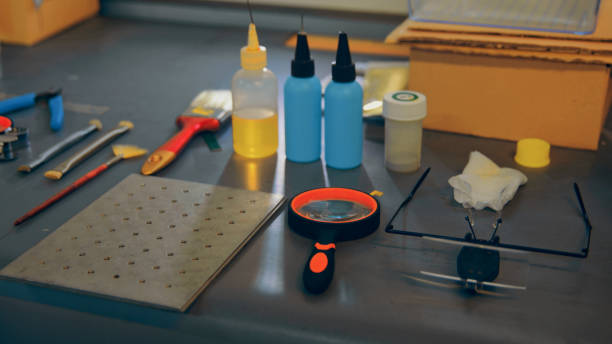Introduction
Let’s face it—unless you’ve got your hands deep in manufacturing, engineering, or high-performance sectors, the term PLG supplies might sound like just another acronym lost in a sea of industry jargon. But don’t let the name fool you. PLG supplies are quietly powering everything from your neighborhood auto shop to the towering cranes that dot modern skylines.
Whether you’re a curious DIYer, a supplier scout, or a procurement pro, this article’s going to give you the full scoop. We’re peeling back the curtain on : what they are, how they work, where they shine, and why they’ve become an unsung hero in industrial supply chains.
What Are PLG Supplies, Anyway?
Breaking Down the Acronym: PLG
First things first: “PLG” isn’t just some random trio of letters. Depending on industry context, it can refer to:
-
Pneumatic, Lubrication, and Gas supplies
-
Power, Load, and Gear components
-
Product Line Group in supply logistics
For the purposes of this article, we’re zooming in on the most common usage—Pneumatic, Lubrication, and Gas supplies, the cornerstone trio in many industrial, mechanical, and energy-heavy environments.
Why Should You Care?
Because if you’re building, fixing, powering, or optimizing anything with moving parts or energy transfer—you need PLG supplies. Think:
-
High-efficiency air compressors
-
Grease guns that keep factory lines humming
-
Safe and certified gas regulators for pressure-sensitive machinery
They’re the behind-the-scenes MVPs.
The Core Components of PLG Supplies
Pneumatic Supplies: Breathing Life into Machines
Let’s start with air—literally. Pneumatic systems harness compressed air to power machinery, tools, and automation systems. Common pneumatic include:
-
Air compressors
-
Pneumatic cylinders
-
Valves and actuators
-
Hoses and fittings
Why they rock? They’re cleaner, safer, and often more cost-effective than hydraulic systems.
Lubrication Supplies: Smooth Operators
Ever tried running a machine without proper lubrication? You’ll hear grinding—and then weeping, because your gear’s toast. Key lubrication supplies include:
-
Lubricants (grease, oil, dry lube)
-
Automatic lube dispensers
-
Oilers and grease guns
-
Lube filtration systems
With proper lubrication, you cut down on wear and tear, reduce heat, and extend the life of expensive machinery.
Gas Supplies: Controlled Power, Safely Delivered
Handling gases (especially under pressure) isn’t something you want to mess around with. That’s why the right PLG gas supplies are vital:
-
Gas cylinders and tanks
-
Regulators and flow meters
-
Valves and safety shutoffs
-
Hoses and manifold systems
These aren’t just for science labs—they’re everywhere from hospitals to industrial welding floors.
Where Do PLG Supplies Fit In?
Industries That Rely on PLG Supplies
The versatility of PLG supplies means they touch a surprising number of industries. Here are just a few:
-
Manufacturing & Automation
-
Oil & Gas
-
Automotive
-
Pharmaceutical
-
Food Processing
-
Construction
-
Aerospace
Wherever movement, pressure, or precision is needed, PLG supplies are part of the picture.
Real-World Use Cases
Still not convinced? Picture this:
-
A bottling factory using pneumatic actuators to cap thousands of soda bottles per hour.
-
A car repair shop using precision grease guns to maintain wheel bearings.
-
A hospital controlling anesthetic flow with calibrated gas regulators.
PLG supplies are like the silent crew backstage—essential but never center stage.
Choosing the Right PLG Supplies
Not All Supplies Are Created Equal
Let’s say you need a gas regulator. You could grab the cheapest one online—or you could consider:
-
Material compatibility: Is it resistant to the gas you’re using?
-
Pressure ratings: Will it handle the flow you need?
-
Brand reliability: Will it fail when you least expect it?
Same goes for lubrication and pneumatic parts. One size doesn’t fit all.
What to Look For
Here’s a quick checklist when shopping for PLG supplies:
-
Certifications (ISO, CE, etc.)
-
Brand reputation
-
User reviews
-
Warranty and serviceability
-
Application-specific design
Don’t get burned by budget buys that break under pressure—literally.
Top Trends in PLG Supplies
Smart Technology & IoT Integration
Gone are the days of manual monitoring. Now, lubrication systems can send alerts when levels drop, and gas regulators can be monitored via your smartphone.
Eco-Friendly Lubricants
Sustainability’s no longer just a buzzword. Many suppliers are switching to biodegradable lubes that don’t sacrifice performance.
Modular Pneumatic Systems
Pneumatic systems are becoming plug-and-play, allowing for easier upgrades and repairs without full overhauls.
FAQs About PLG Supplies
1. What does PLG stand for in PLG supplies?
It typically refers to Pneumatic, Lubrication, and Gas supplies used in industrial applications.
2. Can I use any lubricant for all machinery?
Nope! Always check manufacturer guidelines. Using the wrong type can cause more harm than good.
3. Is it safe to install gas supplies yourself?
Unless you’re certified and experienced, leave it to the pros. Gas systems are no joke.
4. Are there eco-friendly options in PLG supplies?
Absolutely! Look for biodegradable lubricants, low-emission gas systems, and energy-efficient pneumatics.
5. Where can I buy quality PLG supplies?
Trusted industrial suppliers, certified online retailers, and manufacturers’ direct stores are your best bet.
Tips for Maintaining PLG Supplies Like a Pro
Want your systems running like clockwork? Here’s how:
-
Regular inspections – Catch wear before it causes damage
-
Scheduled replacements – Especially for hoses, seals, and valves
-
Keep spares handy – Downtime is the enemy
-
Use compatible accessories – Mismatched parts can create bottlenecks or hazards
-
Document everything – Maintenance logs help identify recurring issues
The Hidden Costs of Ignoring PLG Supplies
Downtime, Damage & Dollars Down the Drain
Think skipping out on a lube check is harmless? Think again.
-
Unexpected breakdowns
-
Increased energy usage
-
Higher repair bills
-
Shortened equipment life
It’s not just about parts—it’s about preventing system-wide meltdowns.
PLG Supplies in the Future: Where Are We Headed?
AI Meets Maintenance
AI-driven diagnostics are already analyzing lube viscosity, gas pressure patterns, and air flow rates in real time.
Automation & Predictive Servicing
Forget reactive maintenance—automated alerts and predictive servicing will become the norm for high-end PLG systems.
Supply Chain Localization
With global logistics still a bit wobbly, companies are leaning toward local PLG supply hubs to reduce delays.
Conclusion: The Quiet Power of PLG Supplies
So, what have we learned? PLG supplies might not scream for attention, but they hold the keys to efficiency, safety, and smooth operations in nearly every industry under the sun. They bridge the gap between raw power and precision control.
From air-powered tools to precision gas flows and friction-free machinery, are the nuts and bolts that keep the world turning—often literally.
Next time you hear a machine hum, a valve click, or a wheel turn effortlessly, give a nod to the humble, mighty world of PLG supplies. They’re not flashy—but they’re absolutely essential.







